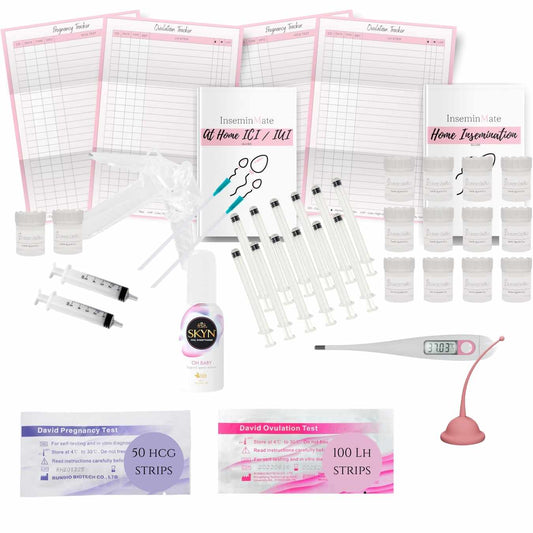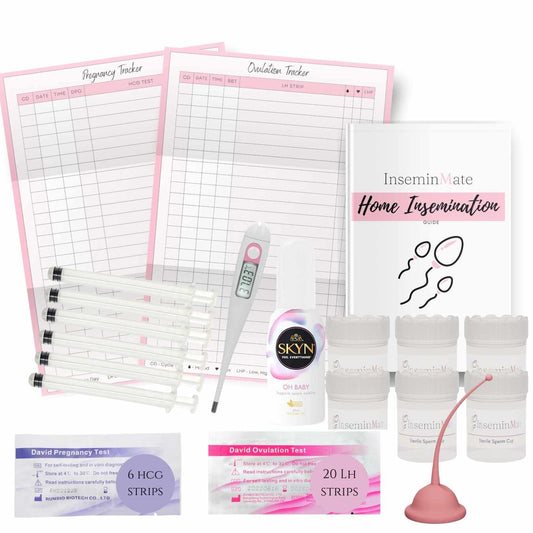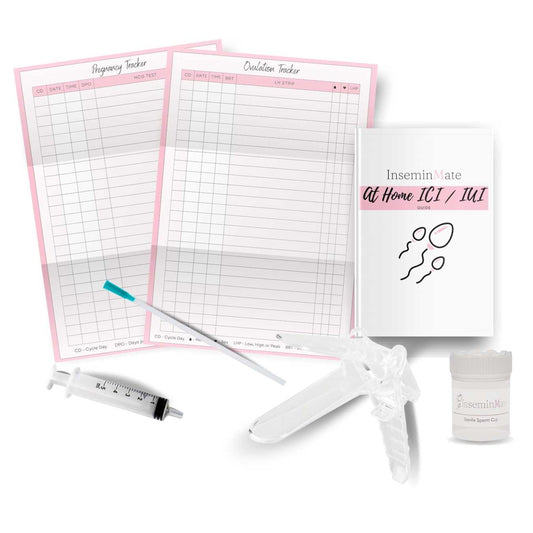When it comes to starting a family, there are many options available for couples who are struggling to conceive. One option that has become increasingly popular in recent years is at-home insemination. But is it really cheaper than other assisted reproductive technologies, such as in vitro fertilization (IVF)? In this blog post, we'll take a closer look at the cost of at-home insemination and compare it to the cost of IVF.
What is at-home insemination?
At-home insemination involves placing sperm near the cervix using an at-home insemination kit. These kits can be purchased online or at drugstores and typically cost between $50 and $150. The kits come with a syringe or a soft cup that is used to deposit the semen near the cervix, making it easier for the sperm to reach the egg. At-home insemination is typically used by couples who are trying to conceive using a known sperm donor or by couples who are using frozen sperm from a sperm bank.
Is at-home insemination cheaper than IVF?
The cost of IVF can vary widely depending on a number of factors, including the location, the clinic, and the type of IVF procedure being used. On average, IVF can cost anywhere from $12,000 to $20,000 per cycle, which can be a significant financial burden for many couples. Additionally, IVF may require multiple cycles to achieve a successful pregnancy, which can further increase the cost.
In comparison, at-home insemination is generally much more affordable. The cost of an at-home insemination kit can range from $50 to $150, and the procedure can be done in the comfort of your own home, without the need for costly medical intervention. Additionally, couples can purchase multiple kits to use over time, which can further reduce the overall cost.
Factors to consider
While at-home insemination may be cheaper than IVF, there are other factors to consider when choosing between the two options. For example, IVF may be a better choice for couples with fertility issues, such as low sperm count or blocked fallopian tubes, while at-home insemination may be more appropriate for couples who do not have any significant fertility issues.
It's also important to note that at-home insemination should only be done using semen from a known donor or from a licensed sperm bank. Using semen from an unknown or untested donor can carry significant risks, such as sexually transmitted infections and genetic disorders.
Conclusion
Overall, at-home insemination can be a more affordable option than IVF for couples trying to conceive. However, it's important to consider all of the factors involved in both options before making a decision. If you're considering at-home insemination or IVF, it's a good idea to speak with a fertility specialist to discuss your options and to determine which approach is best for your unique situation.




